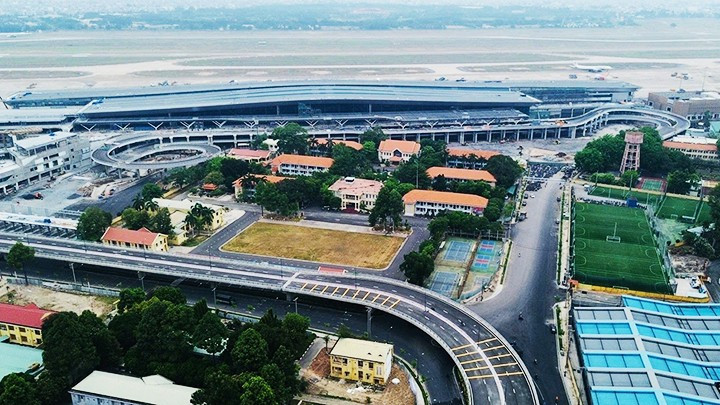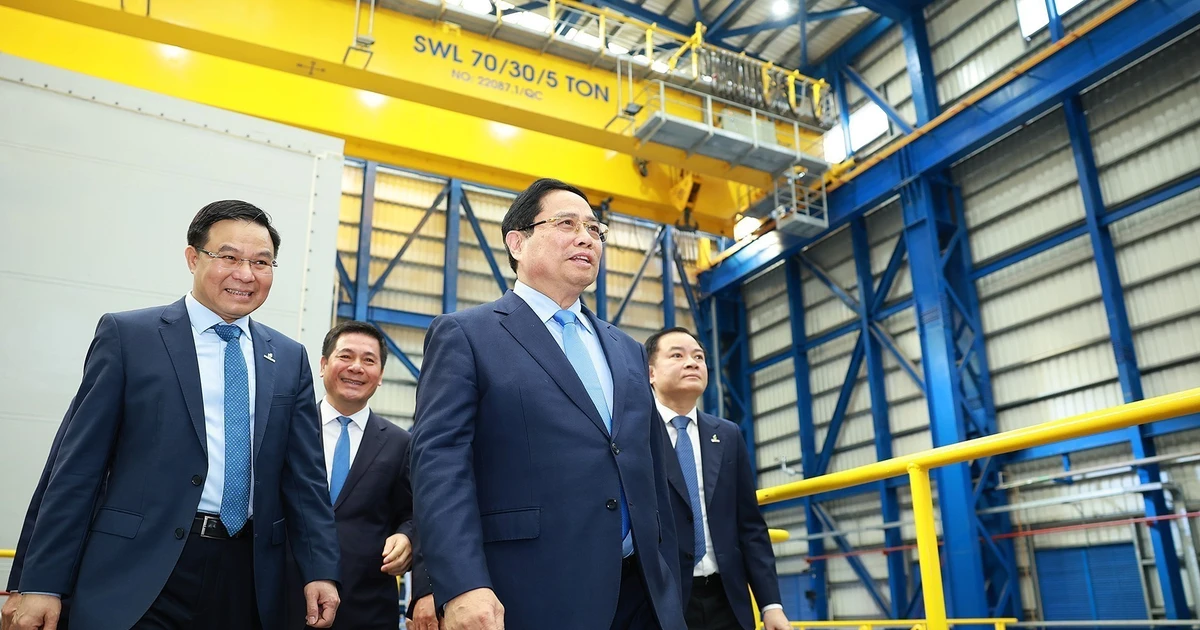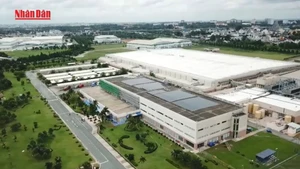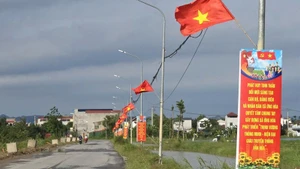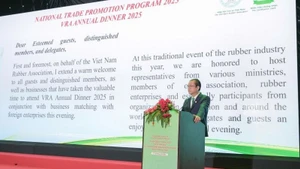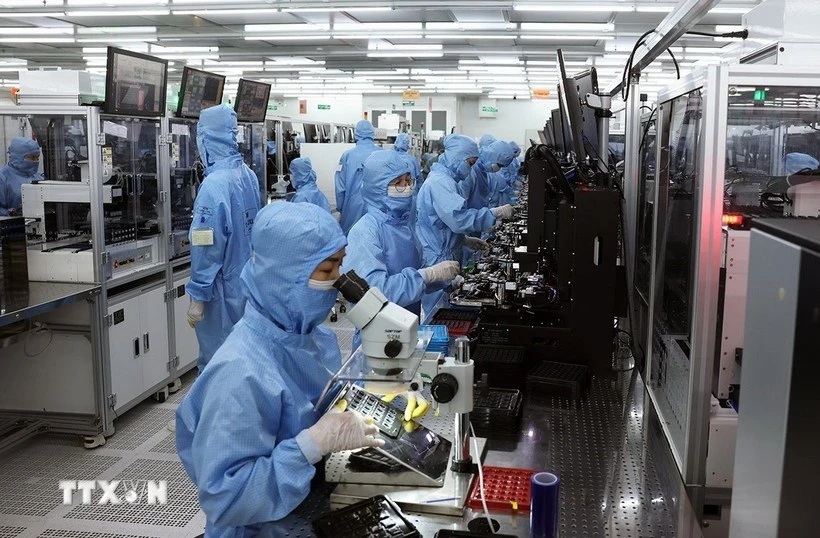Opening gateways
Despite the scorching midday heat in late March, hundreds of workers were still working tirelessly around the clock at the An Phu Interchange to meet the established timeline.
This key project, located at Ho Chi Minh City’s eastern gateway, is designed with three levels, including an underpass and overpass. The HC1 underpass has now reached over 90% completion. The 760-metre-long, four-lane structure connects the Ho Chi Minh City - Long Thanh - Dau Giay Expressway with Mai Chi Tho Street.
Luong Minh Phuc, Director of the Ho Chi Minh City Transport Board, said that work on the HC1 underpass is being accelerated to ensure it opens to traffic by the end of April. Vehicles will be able to move conveniently from the expressway to Thu Thiem Tunnel, thus helping to reduce traffic congestion at the city gateway.
“The opening of the HC1 underpass at An Phu Interchange will help resolve the frequent congestion at this critical junction. For some time now, this intersection has been considered a congestion hot spot, as passing through here during peak hours takes at least several dozen minutes, sometimes nearly an hour,” said Giap Van Dieu, a lorry driver who frequently travels through the area.
The An Phu Interchange is a key transport project in Ho Chi Minh City. Construction began in December 2022 with a total investment of over 3.4 trillion VND (131.8 million USD). Once completed and operational, the project will be considered one of Ho Chi Minh City’s most modern infrastructure projects.
Another key project that will become operational during this year’s National Reunification celebrations is the Nhon Trach Bridge, part of Component 1A of Ho Chi Minh City’s Ring Road 3. Tran Van Thi, Director of the My Thuan Project Management Board, said that the Nhon Trach Bridge construction project and its approach roads have now reached over 90% completion. Nhon Trach Bridge, which crosses the Dong Nai River and connects Thu Duc City (Ho Chi Minh City) with Nhon Trach District (Dong Nai Province), is the largest bridge in the Ring Road 3 project and has achieved over 95% completion.
Component 1A has a total length of 8.22 km, with 6.3 km in Dong Nai Province and 1.92 km in Ho Chi Minh City. The overall project has a total investment of 6.955 trillion VND (269.6 million USD), with the 2.6 km-long Nhon Trach Bridge designed in the first phase to include four motor lanes and two mixed lanes, at a total investment of approximately 1.8 trillion VND (69.8 million USD). This key project plays a vital role in regional connectivity, reducing travel time from Ho Chi Minh City to Dong Nai Province and neighbouring localities.
When the entire project becomes operational and connects with Component 3 of Ring Road 3 through Dong Nai Province, it will lead to the Ben Luc - Long Thanh Expressway, sharing the traffic load with the Ho Chi Minh City - Long Thanh - Dau Giay Expressway and National Highway 51. The project will facilitate inter-regional transport and promote socio-economic development in the area.
At the city’s western gateway, an additional 33 km of the Ben Luc - Long Thanh Expressway will open to traffic before April 30. At the construction site, groups of workers are measuring and marking positions for asphalt paving, while rollers continuously operate to compact the asphalt layers.
According to the Vietnam Expressway Corporation, the two sections to open soon are the 14 km section from the Phuoc An Interchange to Ring Road 3 (Nhon Trach District, Dong Nai) and the 18.8 km section from Le Kha Phieu Street to Nguyen Van Tao Street (Nha Be District, Ho Chi Minh City).
When the 14 km section opens, vehicles will be able to travel continuously for more than 20 km from the Ring Road 3 Interchange (Nhon Trach District) to the National Highway 51 Interchange (Long Thanh District), thus helping to reduce traffic pressure on the Ho Chi Minh City - Long Thanh - Dau Giay Expressway while improving regional transport connectivity. Once opened, the 18.8 km western section will allow vehicles to travel seamlessly for more than 22 km from the My Yen Interchange (Long An) to Hiep Phuoc Industrial Park-Port (Nha Be District).
Thus, by April 30, more than 43 km out of the expressway’s 57 km will become operational, with the entire route scheduled for completion by 2026, creating an important impetus for regional transport connectivity.
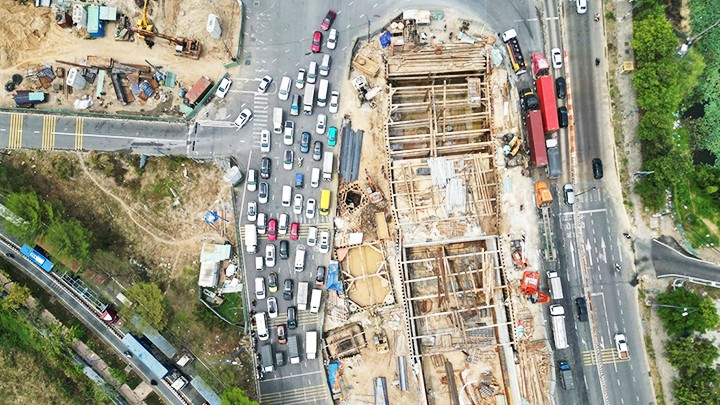 |
| A series of key projects in Ho Chi Minh City will be completed by the end of April. |
The Ho Chi Minh City Transport Board has reported that the National Highway 50 construction and expansion project (Binh Chanh District) has a total investment of nearly 1.5 trillion VND (58.1 million USD), covering the section intersecting with Nguyen Van Linh Street and the final section bordering Long An Province. The project spans nearly 7 km, including more than 4.3 km of new parallel routes. Once the project is completed, transport and economic connections between Ho Chi Minh City and the western provinces will be strengthened, while the transport network at the city’s southern gateway will also be more complete.
Easing inner-city traffic
As a project with high expectations for reducing congestion at Tan Son Nhat International Airport (Tan Binh District), Terminal T3 is also set to be completed and operational by April 30. This is one of the national key projects celebrating the 50th anniversary of Southern Liberation and National Reunification.
According to the Airports Corporation of Vietnam, the T3 Terminal project is in its final stages of completion. Currently, the project is over 95% complete, with important components being urgently finalised to be ready for operation. At the construction site, more than 2,500 engineers and workers, along with hundreds of pieces of equipment and machinery, are working to accelerate progress and complete all components on schedule.
Terminal T3 will be inaugurated during the April 30 celebration as directed by the prime minister. After the peak holiday period, Terminal T3 will officially come into operation, serving all domestic flights of Vietnam Airlines and Vietjet Air.
Terminal T3 will have a capacity of 20 million passengers per year, helping to increase the total capacity of Tan Son Nhat Airport to 50 million passengers per year. Approximately 80% of domestic passengers are expected to pass through Terminal T3, helping to alleviate the burden on Terminal T1, which has been overcrowded for many years.
In the area around the airport, the Tran Quoc Hoan - Cong Hoa route along with the flyover in front of Terminal T3 are also in the final stages of completion and are expected to open to traffic before April 20. At the same time, Hoang Hoa Tham Street will have its entire route opened before April 30.
Another important project is the widening of Duong Quang Ham Street (Go Vap District), with a total investment of more than 2 trillion VND (77.5 million USD), expected to be completed by April 30. This is also one of the key projects celebrating the 50th anniversary of Southern Liberation and National Reunification, contributing to improved infrastructure in Ho Chi Minh City’s inner districts.
Commenting on the role of these projects, Vo Kim Cuong, former Deputy Chief Architect of Ho Chi Minh City, believes that these roads contribute to enhancing connectivity between the provinces in the Southeast region and those adjacent to Ho Chi Minh City, creating a strong impetus for socio-economic development in the region.
Specifically, they will reduce the time, effort, and costs required for transporting goods while providing quicker access to key national transport hubs such as Long Thanh Airport (Dong Nai), Cat Lai Port (Ho Chi Minh City), and Cai Mep - Thi Vai Port (Ba Ria - Vung Tau).
